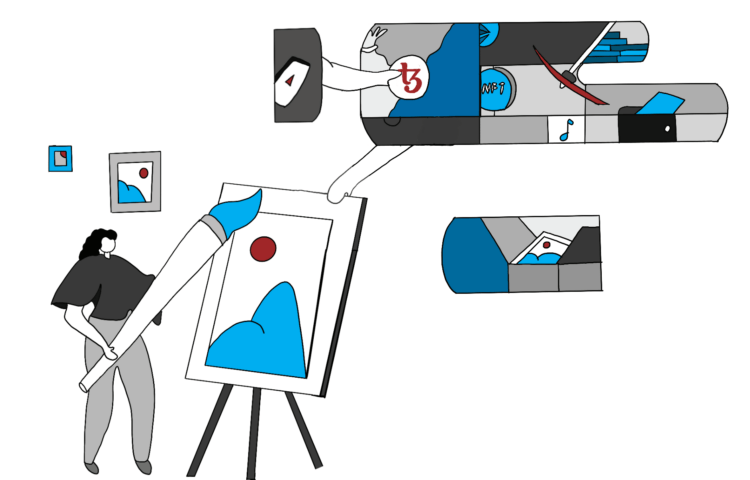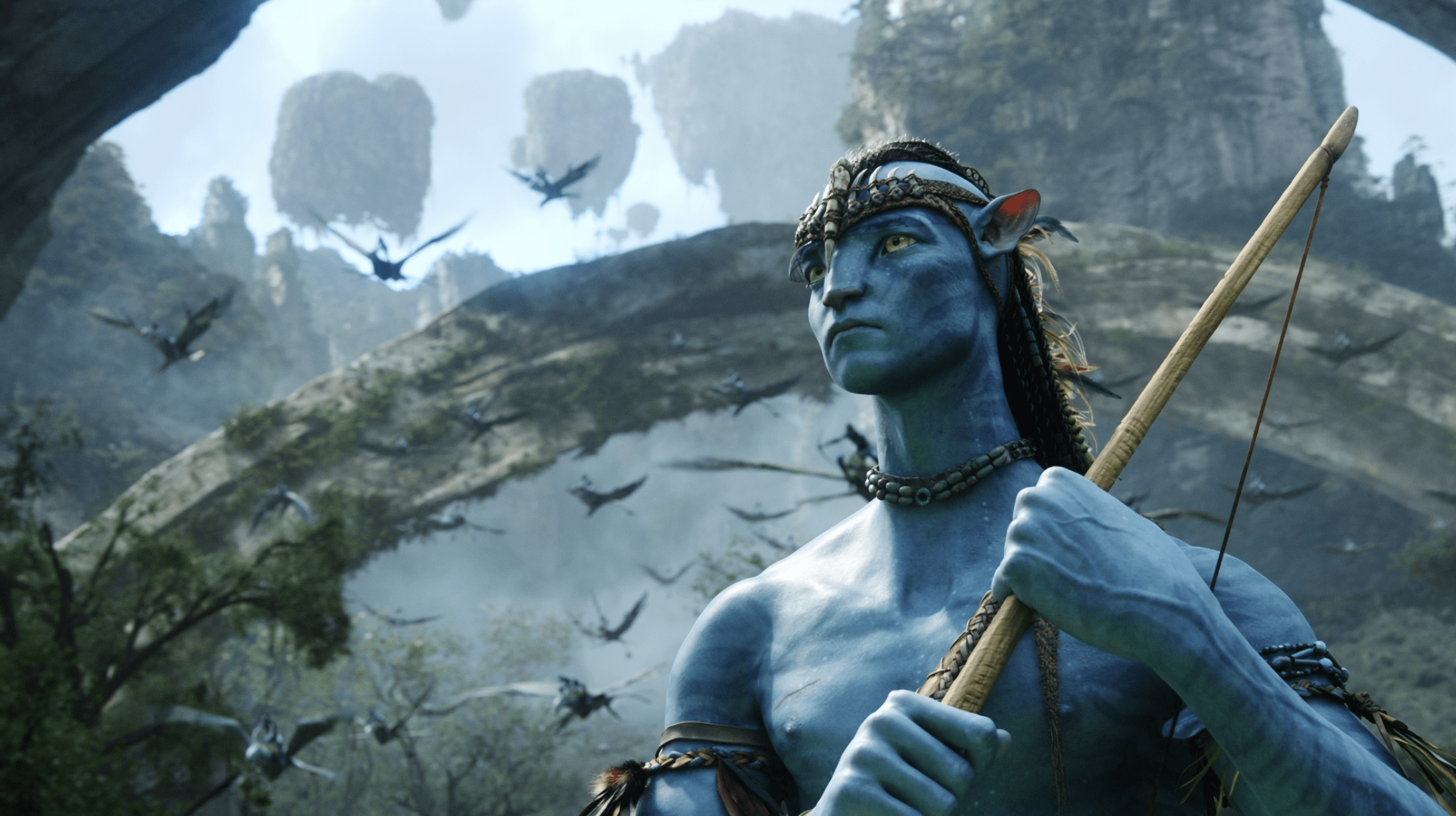
Say the word “NFTs” in a room full of art students, and you are sure to be met with groans and complaints. Quickly, everyone will pile on to talk about how ugly, stupid, and morally corrupt every non-fungible token (NFT) is. By instantly disregarding and mocking the entirety of NFTs, the conversation is fully shut down. There’s no deeper understanding of what NFTs are and what the point of them is. Are there aspects of this space that we should be working toward understanding? How do we talk about the nuances of NFTs? Can we find, as art students, any merit to the spaces within the NFT world?
It’s a pretty difficult conversation to have. Because, yes, many, many NFTs are in fact ugly, stupid, and morally corrupt. But the world of NFTs is deeper than what comes to mind for most of us when the topic comes up because NFTs aren’t an art form, they are a type of art market.
Perhaps the most well-known, and potentially most mocked, NFT series is the Bored Ape Yacht Club. The cheapest Bored Ape costs around $150,000. These apes are serialized profile pictures with slight differences in outfits, colors, etc., and they are based in the Ethereum blockchain. In fact, almost all of the NFTs the general public tends to think about are based in and sold on Ethereum. That’s why there’s such a large ecological cost to minting and buying these NFTs, because of the sheer amount of energy that Etherium requires to mint and sell NFTs. In addition to the environmental problems, Ethereum is also class-based, as it fundamentally locks out many artists because of the high cost and low reward of buying into it in order to mint one’s work.
So if all NFTs are based on this problematic cryptocurrency and the market born from it, why are we talking about NFTs at all? Well, because there’s more nuance to all of it. There are other types of NFT crypto markets that rarely get brought up in these types of conversations, markets that are far more beneficial for young working artists like those of us at SAIC to be aware of.
Enter Hic Et Nunc (H=N), an open-source and community-driven NFT platform formed in 2021, and its cryptocurrency backbone, Tezos.
Though the Tezos blockchain went live in 2018, it was not until March of 2021 that H=N became a usable platform for artists. H=N was largely developed by one person, Rafael Lima, who sought to create a decentralized experiment of NFT distribution. The project grew to support artists all over the globe with an emphasis on artists from the Global South. Every piece of artwork uploaded to the website as an NFT acted as a unique token dubbed an “objkt.” H=N quickly had thousands of artists supporting each other’s works, creating connections and communities, sharing ideals, and minting new objkts.
“H=N initially appeals to artists for its very low fees and its negligible environmental impact,” M Plummer-Fernández, a British/Columbian artist working in physical and digital media, says in his essay “Not Another Jpeg.” Tezos, unlike Ethereum, is based upon a proof-of-stake system which greatly improves the environmental impact it has. The energy required for minting or trading on the Tezos blockchain often gets equated to the amount of energy needed to send a Tweet.
Plummer-Fernández’s essay showcases another important aspect of H=N: the ingenuity and creativeness of the H=N community. On the surface, his article may just seem like any other online essay. But what sets it apart is that his essay “is not text found on [his] website, but is in fact being retrieved from an image [he has] just put up for sale on H=N.”
Artists who work in primary digital forms such as coding art, 3D modeling, animation, machine learning, and countless other mediums, including essay writing, are able to monetize and curate their art in ways they couldn’t in more traditional art markets. Work of this nature is often turned away from galleries and museums, and all of it heavily relies on the digital realm. With the emergence of marketplaces like H=N, these artists have a space to put their work out into the world both for the sake of visibility and financial gain.
This alternative market is largely made up of NFT artists buying each other’s works and building their collections. In that way, it’s not that different from our student art fair. We are all small artists making posters, sculptures, paintings, etc. We spend money on our peers’ art, and our peers spend money on our art. This is what is happening in these NFT communities, but in the digital world and on
a larger scale.
Ultimately, the goal is not to “own a .jpeg.” That has never been what H=N’s community (and the communities H=N spawned) is about. In this framework, purchasing an NFT is taking custodianship of the artwork; it is an act of care for the work and way of protecting it from digital rot.
One artist I talked with, Katherina “Kate the Cursed” Jesek, explained buying an NFT is like feeding the stray cats in your neighborhood. You can never own the cat fully, but you can care for the cat and make sure the cat has food and water. The purchase of one of these objkts is more than right clicking on an image to save it to your computer. As multimedia artist Nathaniel Stern explains, “Collectors on the Blockchain, to me, represent a kind of double permanence: the art lives immutably on a public ledger, and it also has a shepherd to walk it into the future.” The ownership, or the custodianship, as some NFT artists and collectors in the Tezos marketplace have begun to call it, of an NFT is about caring for the work of art and protecting it from digital rot.
H=N was even the centerpiece of a class taught at SAIC in the spring of 2022. Tom Burtonwood, an SAIC faculty member, taught a first-year undergraduate course all about the “Here and Now” of Hic Et Nunc. When asked about why he thought it important to teach the youngest generation of SAIC artists about H=N and NFTs, he said, “H=N struck me as a great introduction to the NFT space, it was / is an anarchic, fluid, diverse, community driven, and not at all corporate, looking like a lot of the other NFT sites so it seemed like a perfect place to introduce folks to. H=N evolved, stalled, got hacked, collapsed and was reborn all in the time between writing a course proposal and everyone stepping into the classroom, so it felt urgent, and immediate and very contemporary. I am looking forward to teaching the class again in the spring of 2023.”
Sadly, on Nov. 11, 2021, only nine days after H=N celebrated 500,000 objkts being minted, the Hic Et Nunc website was taken down. The NFTs themselves lived on, but the site was suddenly and unexpectedly “discontinued” by Lima. In January, Lima went on to say, “We intend to present it as a public blockchain infrastructure, and we are looking into taking it to full decentralization, making it persist beyond even my own will.” It is still unclear whether H=N will ever fully come back.
The end of H=N was not the end of the community it created. Far from it. The community of artists that formed on H=N exploded outward after the site shut down. Now, there are many many Tezos-based NFT websites each with their own niches that ultimately still uphold the work and ideals H=N started. A few particularly interesting ones include Teia, which essentially has replaced H=N as a generalized site, fx(hash) that is focused on coding art, 8biduo for pixel art, and ByteBlock which was created specifically for Indian and Southeast Asian artists.
The communities that have been made in these spheres is the biggest takeaway. The art we make is the stray cats in the neighborhood. It is our job to feed the cats, give them companionship, and make the neighborhood safe for them to roam. But when we dismiss the entire world of NFTs because of the dominant conversation about projects such as NFTtits, Bored Ape, or whatever else is being made for a
quick buck, we lose out on discussing the real artwork and artistic communities that are happening in the Tezos underground.
What we, as young artists learning our crafts, should be asking is not our opinion on NFTs, but how we can build our community of artists using platforms like H=N? How do we best care for our artistic communities of stray cats?







